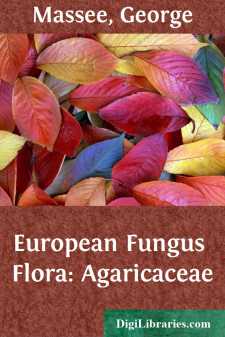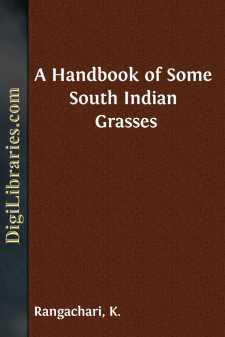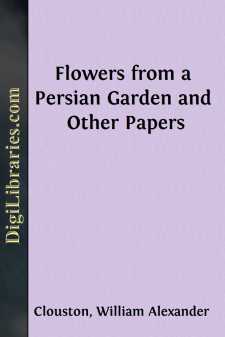Categories
- Antiques & Collectibles 13
- Architecture 36
- Art 48
- Bibles 22
- Biography & Autobiography 813
- Body, Mind & Spirit 142
- Business & Economics 28
- Children's Books 15
- Children's Fiction 12
- Computers 4
- Cooking 94
- Crafts & Hobbies 4
- Drama 346
- Education 46
- Family & Relationships 57
- Fiction 11828
- Games 19
- Gardening 17
- Health & Fitness 34
- History 1377
- House & Home 1
- Humor 147
- Juvenile Fiction 1873
- Juvenile Nonfiction 202
- Language Arts & Disciplines 88
- Law 16
- Literary Collections 686
- Literary Criticism 179
- Mathematics 13
- Medical 41
- Music 40
- Nature 179
- Non-Classifiable 1768
- Performing Arts 7
- Periodicals 1453
- Philosophy 64
- Photography 2
- Poetry 896
- Political Science 203
- Psychology 42
- Reference 154
- Religion 513
- Science 126
- Self-Help 84
- Social Science 81
- Sports & Recreation 34
- Study Aids 3
- Technology & Engineering 59
- Transportation 23
- Travel 463
- True Crime 29
European Fungus Flora: Agaricaceae
by: George Massee
Description:
Excerpt
PREFACE.Observations extending over a period of twenty-five years, made at Fungus Forays and kindred meetings where Mycologists assemble together, has led to the conviction that familiarity with the Fungi and literature pertaining thereto, of one country only, leads to a false impression as to the significance of the term 'species.'
It conveys the idea that species are much more sharply defined than proves to be the case, when the entire Fungus Flora of Europe is included.
In all large genera common to European countries, the continental species can be sandwiched between British species. Even in large genera there are as a rule not more than eight or ten primary differentiating specific characters present, and it is the constant correlation of two or three of those primary characters that constitute a species, as understood at the present day.
If two British species are characterised respectively by the marks 1, 2, and 3, 4, then we find that two continental species belonging to the same genus will be indicated by the characters 1, 3, and 2, 4, respectively.
Primary specific characters should include only those features that are constant, and not materially modified by geographical or exceptional local conditions as to environment, etc., and such alone should constitute a specific diagnosis. Trivial or local characteristics should follow the essential diagnosis as a rider.
With the introduction of characters due to local conditions, a description ceases to be a specific diagnosis in the proper sense, and is merely a description of a certain state of a species occurring under a given set of conditions. Such, however, is too frequently the nature of so-called specific characters given in local Floras.
A lengthy and laboured description suggests lack of power to grip essentials on the part of the compiler, and does not as a rule facilitate the recognition of the species intended.
The idea of this work is to give the essential characters of each species as presented by pileus, gills, stem and spores respectively. This, however, owing to the views of some authors as to the predominant value of one feature to the exclusion of others, has not always been possible. For this reason the species of Britzelmayr are not included, as his descriptions, even when aided by what are presumably intended as figures, could not in many instances be construed into an intelligible diagnosis.
In Cooke and Quélet's Clavis Synoptica Hymenomycetum Europaeorum (1878), 1943 species of Agarics are recorded as European, and of these 939 are given as British. The present work includes descriptions of 2750 European species, of which 1553 are British, a number considerably in excess of that recorded for the species of any other European country.
The species indicated by brackets have not been recorded as British.
G. M.
Kew, June, 1902.
AGARICACEAE, Fries.
Hymenium covering the entire surface of radiating lamellae or gills. Spores one-celled.
Primary divisions of the Agaricaceae depend on the colour of the spores as seen in the mass, when deposited on an opaque substance; and not as seen under the microscope by transmitted light.
-
I. Leucosporae.
Spores white. In some cases with a tinge of yellow or pink. In some species of Russula the spores are clear ochre, but such species belong obviously to Russula notwithstanding.
-
II. Chlorosporae.
Spores clear green or bluish-green.
-
III. Rhodosporae.
Spores salmon-colour or pink.
-
IV. Ochrosporae.
Spores ochraceous or rust-colour.
-
V. Melanosporae.
Spores black, blackish-brown, or black with a purple tinge.
LEUCOSPORAE.
-
I. Haplophyllae.
Margin of gills acute; i.e. not longitudinally split or grooved.-
* Molles. More or less fleshy, soft, and soon decaying or shrivelling (not corky, woody, or rigid).
-
+ Ring, or volva, or both present, or gills free.
Amanita. Volva and ring present. Gills usually free, rarely adnexed or adnate. (Volva sometimes not evident round base of stem, but loose patches on pileus prove its presence.)
Amanitopsis. Volva present, ring absent; gills free.
Lepiota. Ring present, volva absent; gills free. (In some sp. the ring is imperfect, and in a few the gills are slightly attached.)
Hiatula. Gills free; volva and ring absent.
Armillaria. Ring present, volva absent; gills attached.
-
++ Gills adnexed or adnate; ring and volva absent.
Tricholoma. Gills sinuate; stem fleshy.
Russula. Pileus fleshy; gills very rigid, brittle....
-
+ Ring, or volva, or both present, or gills free.
-
* Molles. More or less fleshy, soft, and soon decaying or shrivelling (not corky, woody, or rigid).





